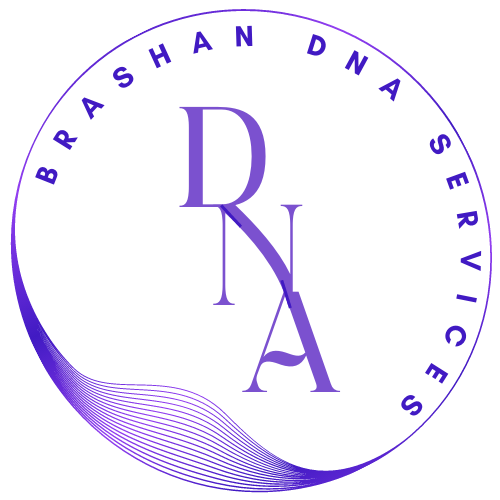How accurate are sibling DNA tests?
Brashan DNA Services operates from a UKAS-accredited testing laboratory (No. 2773) to the quality technical standard of ISO 17025 and is certified to ISO 9001. The laboratory employs some of Europe’s leading DNA scientists to ensure the highest level of technical ability. This ensures that your DNA tests are accurate and performed to the highest standards.
Our laboratory can analyze up to 42 DNA markers in its relationship testing services. In the case of paternity and maternity DNA testing, it is usually possible to provide conclusive results. If a biological parent is undergoing DNA testing, both child and parent will share identical sections of DNA at each marker. It is therefore possible to identify which half of the child’s DNA is inherited from the father and which half is from the mother.
How results are arrived at?
Sibling DNA tests are more complex. Brothers and sisters have one or both parents in common. A full sibling has the same biological mother and father and is a first-degree relative. Full siblings, on average, share 50% of their DNA. Half-siblings share either a mother or a father. Half-siblings are second-degree relatives and have around 25% overlap in their human genetic variation. Sibling DNA tests can thus test individuals to establish whether it is more likely that they share both parents, have one parent in common, or are unrelated.
Across the testing industry, sibling DNA testing can be up to 40% inconclusive. Our laboratory has been able to reduce this inconclusive rate to 24%.
How does the sibling DNA test work?
A DNA sample needs to be collected from both siblings. Full instructions on how to collect the samples are included in the testing kits. This is a simple process and just involves rubbing the inside of their cheeks with a swab to collect cheek (buccal) cells.
When these swabs are returned to our laboratory, the DNA is extracted from the cells. Our in-house DNA experts then use statistical analysis to evaluate the amount of DNA shared between the two siblings and the frequency of the observed DNA within the relevant population. Full siblings are expected to have more DNA in common than half-siblings, and half-siblings normally share more DNA than unrelated individuals.

